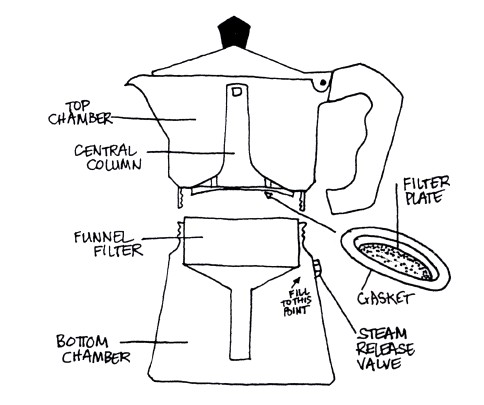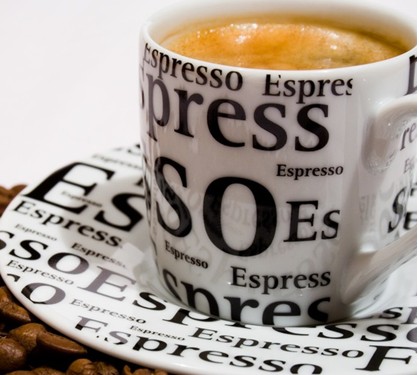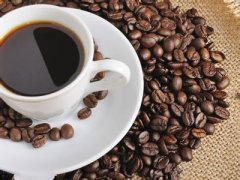How to judge the quality of Espresso coffee by the method of coffee brewing
Caffeine content of Espresso
In addition to its unparalleled aroma, consistency and rhyme, Espresso coffee has one of its biggest features: low caffeine. When some people drink Esprsso coffee for the first time, they have the illusion that such strong and pure coffee must have a high caffeine content. In fact, on the contrary, of all the coffee-making methods, coffee is made with the same beans, and the coffee made by the Espresso machine contains the least caffeine. Because the caffeine in coffee is a water-soluble substance, the longer the coffee powder is in contact with water, the more caffeine is dissolved, while the brewing time of Espresso coffee is only more than 20 seconds. When the caffeine is not released, a cup of mellow coffee has already been brewed, so the caffeine content is only 1max, 3mer, 1max, which is generally used in other brewing methods.
What is Espresso?
The high-pressure and fast brewing method of coffee is called "Espresso", that is, Espresso originally refers to a method of brewing coffee, and later the coffee brewed in this way is also called Espresso. A perfect cup of Espresso coffee is made by 7-8 grams of roasted coffee beans, ground into a very fine powdered coffee, after proper filling (20Kg), with 9 plus or minus 1 atmospheric pressure and 90 degrees plus or minus 2 degrees hot water, the 30CC coffee concentrate is extracted in 2530 seconds.

How to judge a good Espresso
People like to drink coffee because it releases flavor and aroma when it is brewed. The sources of flavor in coffee are mostly water-soluble, such as caffeine, protein, sugar and so on, while the sources of aroma are mostly insoluble, such as coffee oil. The volatile aroma of coffee oil is found in roasted coffee cells. Some of these oils are insoluble in water and only emulsify 10% when using an Espresso machine at high temperature and high pressure and float in the hot coffee juice, turning into a rich ochre red Crema. We can judge the quality of a cup of Espresso by the color, thickness, markings and other appearance of Krima.
The thickness and rhyme of Espresso
Espresso coffee tastes particularly thick, and its consistency comes from the fact that when the water flows through the coffee powder to the cup, the carbon dioxide bubbles are suspended in the coffee juice liquid and mixed with an emulsified gel. These gelatinous substances inhibit the taste buds' sense of bitterness, making us feel particularly fragrant and strong when drinking Espresso coffee, but not too bitter. These mixed colloidal substances and emulsified oils become tiny droplets and are responsible for the so-called "rhyme", that is, by reducing the surface tension of the liquid. At the same time, the gel makes the tiny oil droplets penetrate the taste buds deeper, making the oil stay, and then slowly release the aromatic substances attached to it. This aroma can let the olfactory senses know the aroma and throat rhyme for up to 20 minutes after drinking Espresso coffee.

Important Notice :
前街咖啡 FrontStreet Coffee has moved to new addredd:
FrontStreet Coffee Address: 315,Donghua East Road,GuangZhou
Tel:020 38364473
- Prev

Prerequisites for brewing coffee Coffee grinding techniques
Grind your coffee and enjoy its aroma. Then enjoy it with gusto. Coffee beans grinding methods can be slightly divided into coarse grinding, medium grinding and fine grinding according to their size. Use appropriate grinding methods depending on coffee equipment. There is also a medium fine grind or a very fine grind finer than fine grind (into powdered coffee powder). The coffee beans are ground before brewing coffee.
- Next

Selection of boutique coffee beans how to choose fresh coffee beans
There are three steps: smell, see, and peel. Smell: put the coffee beans close to the nose and smell them deeply to see if you can clearly smell the aroma of the coffee beans. If so, the coffee beans are fresh enough. On the contrary, if the aroma is weak, or has begun to appear greasy, it means that the coffee beans are not fresh at all. This kind of coffee beans, no matter how much effort you put into grinding and cooking,
Related
- What is the meaning of lactic acid fermentation with coffee bean treatment?
- How to judge the state of foam by sound?
- How does the latte pull out the unicorn pattern? Come to get for a little trick to improve the flower pull!
- Will flower pulling affect the taste of the latte?
- Do you know the history of coffee?
- The difference between honey treatment and sun washing what is raisin honey treatment?
- What kind of milk can a novice use to make coffee foam to keep the foam longer? The correct method and skills of milking tutorial sharing
- Why do washed coffee beans taste sour? Flavor characteristics of washed Coffee
- Introduction to the skill of how to practice the size and height of water injection around the circle of hand-brewed coffee
- How do beginners practice coffee flower drawing from scratch?

